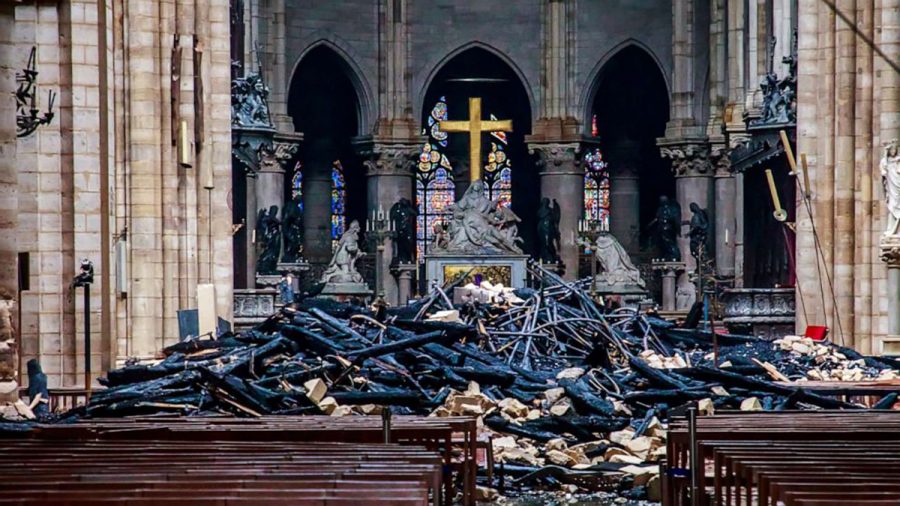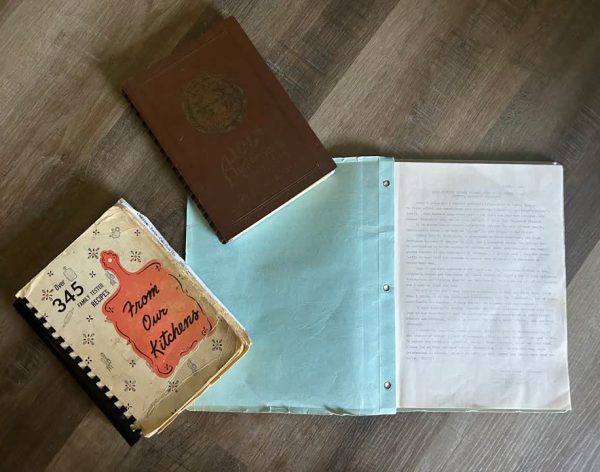Notre-Dame damaged in extensive fire
News coverage of the tragic loss of cultural monuments leans to the West
Photo by ABC News
The main altar of Notre-Dame is surrounded by debris after the fire was doused.
Social media is covered with news and personal accounts of the fire that swallowed up Notre-Dame Cathedral. The fire started Monday evening and was not fully extinguished until Tuesday morning.
Though the building itself suffered “colossal damage” — according to Paris Deputy Mayor Emmanuel Gregoire — the art, statues and Christian relics were safely removed from the building either as soon as the fire started or previously, since the building was undergoing renovations.
As terrible as this whole situation is, I’m intrigued as to why I heard about this fire almost as soon as it started, but I didn’t learn about the National Museum of Rio de Janeiro burning down in September 2018 until months after the event.
An article by The Atlantic describes how a large portion of the 20 million specimens was destroyed in the Rio de Janeiro fire. It was especially devastating because “many of these presumably lost specimens were holotypes — the first, best, and most important examples of their kind.”
This article specifically talks about how the museum fire was preventable, stating the building “had long suffered from obvious infrastructure problems including leaks, termite infestations, and — crucially — no working sprinkler system.”
If this museum was in America or Europe, I’d be willing to bet it would have had a proper sprinkler system, since these monuments are generally treated as being more important. I shouldn’t have to remind you that the items in the museum were priceless and extremely important to Latin America, as well as scientists everywhere.
Based on this, it seems like the only thing deeming it less worthy of the same media attention is its location in a developing country. If a cathedral in a developing country had faced the same fire that ravaged Notre-Dame, there’s the question as to whether it would be given the same attention.
In fact, a fire did break out in a mosque in Jerusalem around the same time as the Notre-Dame fire. Even though Jerusalem is a developed country, and the fire was minor in comparison, the lack of media attention from the western world was notable.
While reading this article about the Brazil museum, they also talked about a massive fire which destroyed much of New Delhi’s natural history museum back in 2016. This was another case where the water system was not working.
According to an article by The Guardian, “One of the highlights of the collection was an irreplaceable bone from a sauropod dinosaur, which was an estimated 160m years old. It may have belonged to one of the largest animals to have walked the Earth.”
These are pretty large scale events, and maybe we didn’t hear about them because they weren’t happening in the United States. But that logic doesn’t hold up with events like the oil leak on wetlands close to Native American reservations in 2017.
According to an article by National Geographic, “the spill occurred about 30 miles west of (the Sisseton Wahpeton Oyate) tribe’s Lake Traverse Indian Reservation, a region covered with wetlands — some of which drain into the reservation from outside.”
The Standing Rock protests received huge amounts of media coverage, but after the executive action was signed to move along the Keystone pipeline, hardly any media followed up on how it turned out.
By bringing these things up I don’t mean to lessen the tragedy the Notre-Dame fire was. As someone who was lucky enough to tour the cathedral, it was devastating to hear about the fire.
But the problem still remains. Our media prioritizes Western news, especially when Western tragedies occur. For this reason, it’s hard for people to shift their gaze to what’s happening everywhere.
Kuchta can be reached at [email protected].

Tiana Kuchta is a fourth-year English critical studies student. Outside of The Spectator, she enjoys spending her time reading, being with family, catching up on Netflix and being surrounded by cats.











